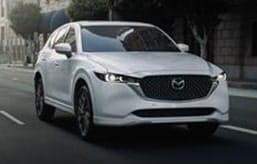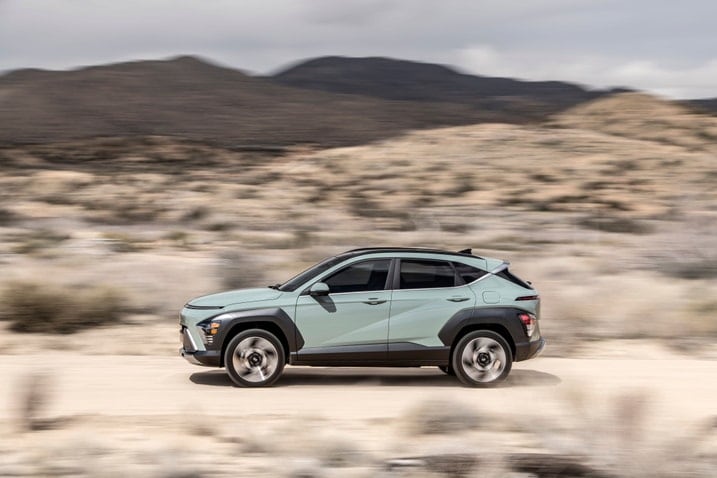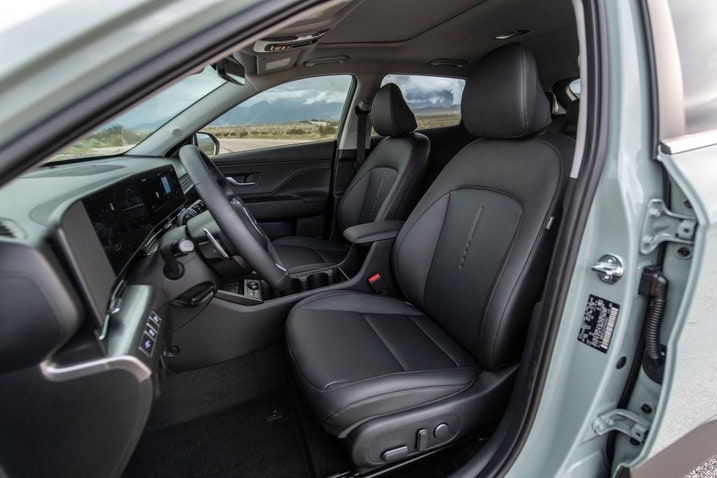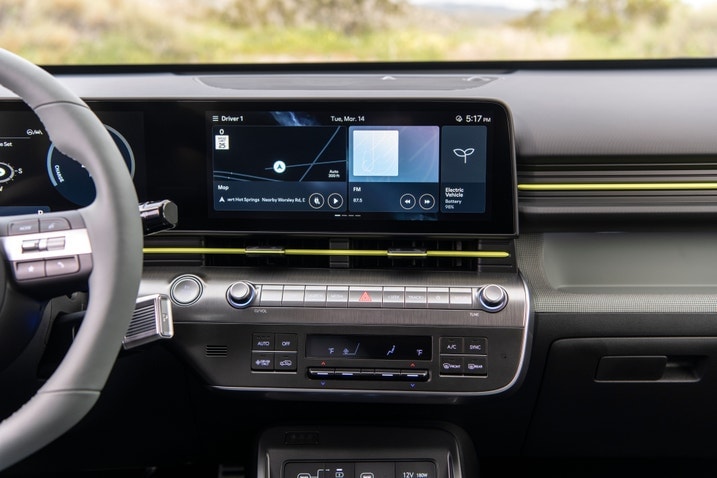- The 2024 Hyundai Kona gets a redesign with more space and a much improved tech suite.
- We drove the upgraded 1.6-liter engine and came away (mostly) impressed with the new Kona's behavior on the road.
- While the engines don't offer any more power or efficiency than before, they feel more refined in practice.
2024 Hyundai Kona First Drive: Bigger Car, Better Time
Hyundai's small crossover grows up in its second generation
The Hyundai Kona is redesigned for the 2024 model year. This new second generation of Hyundai's extra-small crossover SUV builds on the original with new styling, a roomier interior and updated technology features. It competes against other inexpensive crossovers such as the Chevrolet Trailblazer, Honda HR-V, Kia Niro and Volkswagen Taos.
The new Kona is bigger than before. It grows nearly 6 inches in overall length, and that translates to a few more inches in rear legroom, which is a welcome addition since the previous model was a little cramped in the back. The trim level lineup is similar to last year, though the sport-tuned Kona N has been discontinued, with no official word yet on whether it will return at some point.
Kona meets the road
Hyundai hasn't changed much compared to last year. Most Konas come with a 2.0-liter four-cylinder engine paired with a continuously variable automatic transmission, or CVT. Unfortunately, its 147 horsepower and 132 lb-ft of torque is unchanged from the current model, so expect lackadaisical acceleration when you put your foot down.
The N Line and Limited trims receive a more potent turbocharged 1.6-liter engine mated to an eight-speed automatic. This engine is actually less powerful than previously, developing 190 hp and 195 lb-ft (down 5 hp compared to the outgoing model), though the transmission is new and replaces the previous dual-clutch automatic.
So far, we’ve only driven the 1.6-liter-equipped Kona and came away with mixed feelings. Right away, the new automatic transmission feels like an improvement over the dual-clutch automatic that it replaced. It shifts a lot more smoothly, even though the shifts take a little longer than before. We think this is a trade-off most Kona drivers will be happy with.
We previously praised the Kona's acceleration with the turbo engine, but because the Kona is now quite a bit bigger, even the turbocharged engine has to work hard for highway entrance ramps or quick passing. We're guessing the new model's 0-60 mph acceleration will be worse than its predecessor when we put it through our Edmunds vehicle testing.
We also praised the Kona in the past for poised handling but discovered a propensity for it to get bouncy over bumps. Even with the new Kona's larger size, it still has that same midcorner bounciness. It's a strange blemish on what is otherwise a competent driving experience.
The old Kona had a tendency to be overly vocal, an issue that is almost completely resolved in the new car. This improvement, combined with improved noise insulation elsewhere in the car, makes the new Kona a much more pleasant everyday commuter. The ride quality can be a bit busy over small bumps and bruises in the road, but it feels no better or worse than the majority of vehicles in this segment.
Big improvements inside
The new Kona's sleek, modern interior looks more cohesive than the previous model. The center console has been trimmed down, and relocating the transmission selection buttons to a stalk behind the steering wheel frees up space for a large storage area, which is perfect for Big Gulps or just stashing a lot of gear. We dig the Kona's new steering wheel (which it appears to share with the heavily refreshed 2024 Sonata), and the front passenger enjoys extra utility thanks to a storage shelf on the dash. Thoughtful touches like ambient lighting strips sprinkled throughout the cabin ensure the interior looks as tech-forward as the exterior. Hyundai offers a nice range of optional features on the Kona such as heated and ventilated seats and a heated steering wheel — things that are not present on many rivals.
The centerpiece of the Kona's cabin is undoubtedly the wide panel display that houses twin 12.3-inch displays. The display touchscreen is loaded with Hyundai's newest infotainment system, which supports over-the-air (OTA) updates to keep the software current. New features include Digital Key 2 Touch (allowing owners to use their smartphone as a vehicle key), a surround-view parking camera and a Bose premium audio system. Apple CarPlay and Android Auto smartphone integration is standard, and the entry-level SE and SEL trims have wireless connectivity capability. Oddly the more expensive trims, the ones that further come with an integrated navigation system, lack wireless connectivity. But Hyundai recently announced plans to roll out an OTA update to add wireless Apple CarPlay and Android Auto to navigation-equipped models next year.
Also on deck are additional advanced driver assist systems. A remote parking system (accessed via the key fob), a blind-spot camera, lane centering assistance, and front cross-traffic warning all join the list of features now available on the Kona. They join existing aids that include forward collision warning, adaptive cruise control and a safe-exit alert system. Many of these aren't available on competitors at all. If you prioritize advanced driving aids above all else, you might want to start your small SUV search with the Kona.
Edmunds says
The redesigned 2024 Hyundai Kona improves upon what was already one of our favorite small SUVs with a fantastic interior packed with technology. It's a shame the powertrains were untouched or degraded since other aspects of this little crossover seem impossible to resist.






 by
by